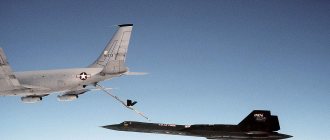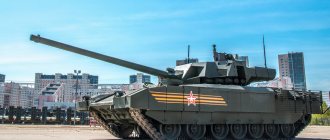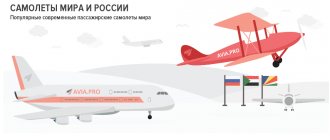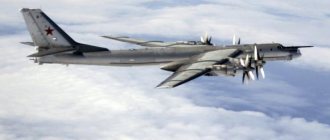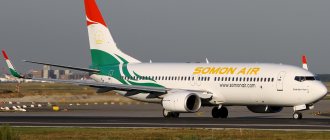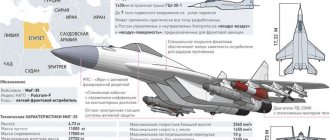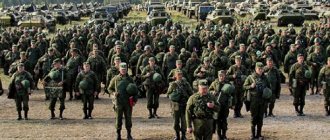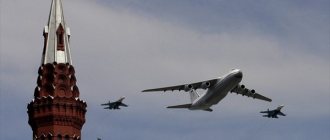For many years after the collapse of the USSR, Russian industry has not pleased its compatriots with breakthroughs. Rare successes have only a local effect, and over time they are completely inferior to heavy foreign competition.
Not all of them became known to the general public - for various reasons, the discussion of which has no place in the article. But even in the most difficult crisis years, the development of unique devices was in full swing.
Some of them, if worked properly, could fundamentally change the logistics of the world around us, making accessible what seemed extremely distant and inaccessible. Others are capable of creating an economic revolution by making flights more affordable than traveling by private car.
One way or another, they were all invented in Russia to solve real, albeit difficult to achieve, goals. Let's see how the world could change?
Be-2500 super-heavy seaplane project
Year: 1990
Be-2500 model in the OKB museum
The colossal seaplane began to be planned back in the eighties. It's no joke: the total weight of the project was supposed to be 2.5 thousand tons.
The same amount weighs 14 Boeing 747-400, 6 An-124-100 “Ruslan”, one self-propelled barge, the contents of a standard vegetable storehouse, or all the pink salmon caught in Kamchatka in a year!
One of the Be-2500 variants in the ekranoplan version
The device had to move both in airplane mode (at an altitude of up to 10 thousand kilometers) and in screen mode (a meter above the surface of the water), ensuring the transportation of cargo up to one THOUSAND tons over a distance of 16 thousand kilometers at a speed of up to 770 kilometers per hour.
Or 400, if the flight is carried out at low altitude due to the screen effect. A little? 4 times faster than a hovercraft, 8 times faster than the fastest yachts.
Old render of Be-2500. The layout is surprising
The project would require 16 kilometers of runway to take off. Or flat water area with waves up to 3-4 points.
It took off from the seaport and brought the cargo to a land airfield on another continent. Not a bad idea, right? The project is stopped by the lack of government funding, which is either there or not.
And, of course, engines: the NK-116 turbofan engine project with a fan diameter of 5 meters was worked out in 1994 in Samara, but it did not even reach a prototype.
Utility Tu-136 on cryogenic fuel
Year: 1996
Scale model of Tu-136, made in two thousandths
An original project for a cargo-passenger regional aircraft powered by cryogenic fuel, that is, using liquefied natural gas as fuel.
The project was based on components of existing serial projects of the Tu-300 product line, which became a paper continuation of the serially produced one at that time at Ulyanovsk Aviation, and was developed in parallel with the cargo-passenger version of the Tu-204/Tu-334 with a ramp.
However, in a greatly reduced version (the plane was designed for only 50 passengers or 5 tons of cargo for a range of up to 2 thousand kilometers) and an original layout with tanks moved from the wing into the engine nacelles.
The concept has been worked out in detail, not only diagrams, but also drawings are ready
They also didn’t bother too much with the engine, having converted the serial TV7-117. As a result of the work, the engine was able to run on both liquefied gas and classic kerosene.
Compatibility made it possible to quickly obtain results in the hope of a serial launch for operation in the Russian North, and the use of gas significantly reduced the cost of flights.
Unfortunately, there was no customer for mass production on a reasonable scale.
Supersonic business jet Tu-344
Year: 1998
The matter did not progress beyond the drawings and preliminary diagrams of the Tu-344
Passenger flights at speeds above the speed of sound ended with the Concorde and Tu-144. Almost before it became the norm. And today they dream about them, but do not expect them.
Despite the obvious speed advantages, the overall cost of developing supersonic airliners, the noise of such aircraft and the cost of tickets forced the closure of all more or less significant projects.
The progenitor of the Tu-344 is the Tu-22M3 strategic bomber
Back in the second half of the nineties, the Tupolev Design Bureau proposed the simplest way to combat the high cost of developing and owning such aircraft, proposing a project based on the serial... strategic bomber Tu-22M3.
There are a lot of advantages: the circuit is ready, mass production has been established, spare parts are available. And even gliders ready for conversion could probably be found in those troubled times - for example, using army vehicles that were flying away as a basis.
Updated project under a new name
It was buried by stricter environmental standards and the lack of quiet engines to replace serial ones. And there were no customers in Russia - who would allow something like this to be sent abroad?
Today the situation has changed, analogues of the Tu-344 are in demand on the market. A supersonic business jet for 10-12 passengers is the dream of many businessmen. Who knows, maybe the project will be revived.
Sukhoi S-90 multi-mode ground effect vehicle project
Year: 2000
Photo of the S-90 prototype. Place and time unknown
The Sukhoi Design Bureau hastened to disown this project after the presentation that was announced, but never took place, at the air show in Gelendzhik in 2000. There is still no official information about the status of the project, at least not on the company’s website.
In general terms, the S-90 can be described as a “non-airfield-based aircraft with an air-cushion landing gear.” But that's not all. The main thing is its multi-mode, on which the characteristics and “method” of flight depend.
Depending on the tasks performed, the S-90 can be
- by local airline aircraft with a hovercraft landing gear, flying at altitudes of over 3 thousand meters at a speed of 400 km/h, carrying up to 2.5 tons of cargo over a distance of up to 2000 kilometers;
- ekranoplane, flying at speeds of up to 400 km/h at an altitude of up to 15 meters above any smooth surface (water, earth, snow or ice), carrying up to 3 tons of cargo over a distance of up to 3000 kilometers;
- a “ship” on an air cushion, hovering at speeds of up to 80 km/h half a meter from the water or a smooth surface with a load of up to 4.5 tons and a range of 3000 kilometers.
All this does not require re-equipment. We loaded up, took off to the desired altitude, selected the appropriate mode and flew. Unless the pilots would have to be seriously retrained. Or take sailors?
Smekha S-90
An airfield is not required for takeoff and landing in any mode. A flat piece of land or water of 240 meters (or 800 according to aircraft rules) with any surface is sufficient. Either fly to the village or to the islands.
Apparently, the S-90 remained a paper project. Although some information and photographs still exist, suggesting serious intentions of the developers.
The business project involved the production of up to 2 thousand amazing multifunctional devices only for Russia. And no less for a foreign customer. One can only guess what exactly happened.
Jets
The idea of creating a jet aircraft belongs to the inventor Teleshov. It was brought to life by designer A. Coanda in 1910. Attempts to start the plane using the engine were unsuccessful.
Already in 1939, a jet aircraft was launched. The tests were carried out by the German company Heinkel. The prototype aircraft could reach high speeds in a short time. He flew at an altitude of 60 meters.
There were certain errors in the design:
- significant fuel consumption;
- incorrect choice of power plant;
- constant need for refueling.
Due to the last reason, the plane could not fly more than 50 km. The model was not released into mass production because design errors were not corrected.
In 1946, a new jet-powered aircraft was developed. The achievement belongs to the American company Bell Aircraft. The Bell X-1 aircraft could fly at an altitude of 24,400 m. It reached a speed of 2,720 km/h.
Bell X-1
Interesting fact! This aircraft made 80 flights.
In 1949, the aircraft rose to a height of 7600 m and reached a speed of 273 km/h in 1 second.
Ultralight multipurpose aircraft Elitar-Sigma, 2002
Year: 2002
Sigma-4 can use all types of chassis
The project of a private aviation company under the name “Sigma Design Bureau”, which means nothing to an outside observer, received, unlike many other promising aircraft, the necessary flight certificates.
But mass production stopped back in 2010 on the thirtieth car. Russian airspace is too strictly regulated for private flights of small aircraft, and in the West there are more affordable aircraft.
The only production aircraft in the article
Although calling the light two-seat multi-purpose Sigma-4 an airplane is not entirely correct from the point of view of aircraft manufacturing. This is a helicopter cabin with a pair of snowboards on power beams!
The design is truly unconventional, although it is found among Western competitors: instead of a fuselage, a supporting frame of power beams is used, to which everything else is attached. Usually it's the other way around.
Every family in Russia needs one
"Sigma" is capable of carrying up to 80 kilograms of payload internally or on an external sling. Can use landing gear, skis or floats when taking off from any type of short airfield.
And it is even still operated by a number of agricultural enterprises. At a cost slightly more than the average luxury SUV, isn't this a revolution, a Ford from the world of Russian aviation?
The first aircraft in the world and Russia
The first person to invent an airplane in the whole world was Anthony Fokker. This event took place in 1910. He took the first de Spin into the sky. Unfortunately, the aircraft did not cover much distance. He crashed into a tree. Fokker did not stop his experiments there.
Anthony Fokker
In 1911, he created a company, which already in 1915 produced the first fighter aircraft. It was thanks to this air machine that Germany managed to change the course of the First World War.
Aircraft characteristics:
- The wing span of the aircraft reached 8.53 m;
- The fuselage length is 6.76 m, and the height is 2.89 m;
- The plane developed a cruising speed of 132 km/h.
Note.
The company existed until 1996. The first person to invent an airplane in Russia was Alexander Mozhaisky. This happened in 1876. At that time he was testing with a small boat on which wings were mounted. The secular press of that time was interested in the unusual structure. Publications about him appeared in various publications.
Alexander Mozhaisky
This invention was not ignored by Dmitry Ivanovich Mendeleev. At that time, the scientist was known throughout the world. It was he who convinced the commission of the Main Engineering Directorate to sponsor the experiments.
Note. At that time, the country was skeptical about inventors of this kind. For this reason, Mozhaisky was unable to complete his experiments.
1881-1886 - start of testing of the aircraft. All attempts to stay in the airspace as long as possible were unsuccessful. In 1890, the designer died without finishing his work. Many argue that if he had had more time and finances, modern aircraft would have appeared much earlier.
Super-heavy marine ekranoplan TTS-IS
Year: 2004
Model of the colossal concept
Another “pseudo-aircraft” with the preliminary name “Heavy transport aircraft of an integrated circuit” became a relatively recent development of the Central Aviation State Institute (TsAGI), which began its journey in 2014.
The initial project involves the creation of a super-heavy ground effect aircraft with a take-off weight of 1000 tons, a payload of 500 tons, a flight range of more than 6000 km, and a cruising speed of 500 km/h.
A detailed diagram was released a couple of years ago. There are no new materials yet
A more “advanced” version should become supersonic and reach a cruising speed of 1900 km/h while maintaining a range of 8600 km.
Impressive figures remain on paper for now: it is planned that the first prototypes of reduced dimensions will appear only in the thirties of our century. There are no suitable technologies for implementation yet.
For now, TsAGI is concentrating on developing unique materials and assembly technology. They are waiting for engines. Whether suitable ones will exist remains a mystery today.
The first military aircraft
The aircraft, which managed to get off the ground and also spend a short amount of time in the air, was the development of the Wright brothers. Orville and Wilbur designed it in 1900. The Wright brothers' first plane was called Flyer 1. Its first flight took place in 1903.
Wright brothers
The aircraft spent about 59 seconds in the air. In this short time, it flew 260 m. Already in 1904, the model was modified. A year later, the plane flew a distance of 39 km.
Aircraft characteristics:
- wingspan - 12 m;
- weight - 283 kg;
- power plant power - 9 kW;
- power plant weight - 77 kg.
The gasoline engine, which accelerated the car to the desired speed, was mounted on a wooden frame. The plane had no landing gear. Instead, a catapult was used for launch. It was equipped with a direction flight made of wood. The Wright brothers spent about $1,000 to create such an aircraft. USA.
Multi-purpose ekranoplane hovercraft "Tungus"
Year: 2015
“Tungus” flies, but so far in a single copy
The domestic school of development of all-terrain vehicles often surprises Western professionals. “Tungus” did not stand aside, becoming perhaps the most all-terrain vehicle in the world. With some reservations.
This amazing hybrid ekranoplane and hovercraft can take off from any flat surface, carry up to 21 passengers or 2 tons of cargo with a range of up to a thousand kilometers with minimal fuel consumption.
The operation scheme is simple: the engines pump air under the “ship” and lift it to a height of up to half a meter, while simultaneously imparting horizontal thrust. So it can transport up to 1.8 tons of cargo at speeds of up to 80 kilometers per hour.
The smaller version has been in use for more than one year
The forced mode allows you to increase the “flight” altitude to 15 meters and reach speeds of up to 190 kilometers per hour, moving at an altitude of up to a meter. Then snow hummocks 15 meters high are not a hindrance.
This is where the screen effect comes into play, and the cushion is created without thrust, only due to the aerodynamics of the wing. In this case, all the engine power goes to horizontal movement.
The air cushion allows you to freely rise from wetlands, forest clearings, sands, shallows and those places where conventional equipment fails. Or just swim quickly over the water.
The screen effect increases load capacity, reduces fuel consumption and increases cross-country ability. So the “flying boat” is the king of hard-to-reach regions. And you can buy it. But there are far fewer customers than one would expect in our country.
The first passenger planes
The man who laid the foundation for the creation of passenger aircraft was Alberto Santos-Dumont. Initially, he designed hot air balloons and airships. In 1905, he completed work on the design of the first flying machine. Already in 1906, the designer made the first flight on an aircraft of his own production. The air machine was called Oiseau de proie or 14-bis. Translated, this name means “Bird of Prey.”
Alberto Santos-Dumont and his 14-bis
First flight characteristics:
- height - 2-3 m;
- range - 220 m;
- flight time - 22 seconds.
The aircraft was equipped with removable landing gear.
Looking at the aircraft design experience of the Wright brothers and Santos-Dumont, the Russian government decided to begin its development in this area. The only nuance was that at that time there were no designers in Russia with experience in creating aircraft. Many of them have never seen these cars.
The first Russian aircraft that was able to fly several tens of meters without an accident was created by Alexander Kudashev, a professor at the Kiev Polytechnic Institute. In 1910, he flew in an air machine of his own production.
Igor Sikorsky adopted the experience of designer Kudashev. He created the Ilya Muromets aircraft. This is the first passenger aircraft to be equipped with partitions. They divided the cabin into different compartments: a sleeping area, an entertainment compartment, a restaurant and a bathroom.
Development by Igor Sikorsky
In 1913, a significant event took place. The plane took off for the first time. A year later, a presentation flight took place. There were 16 passengers on board.

